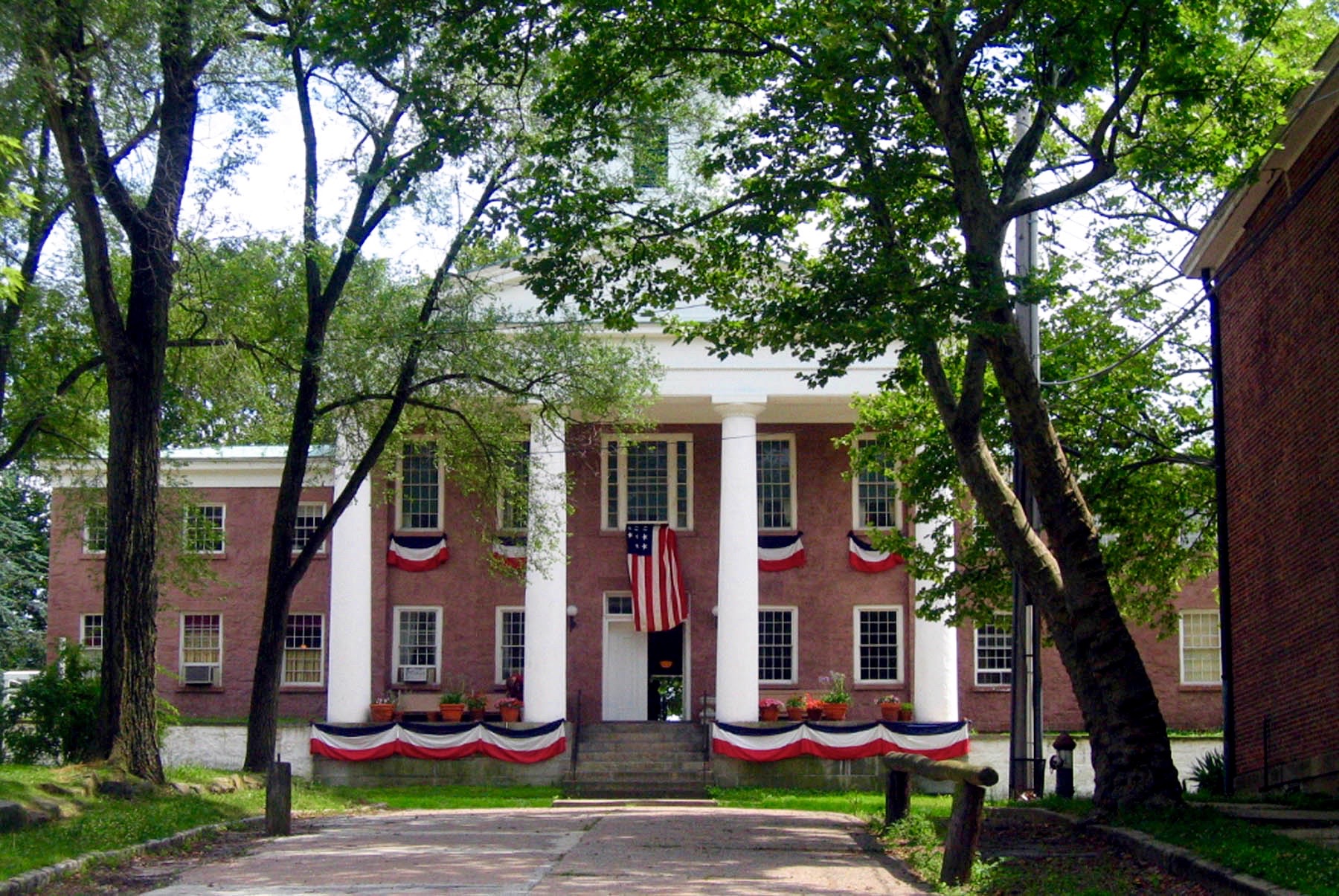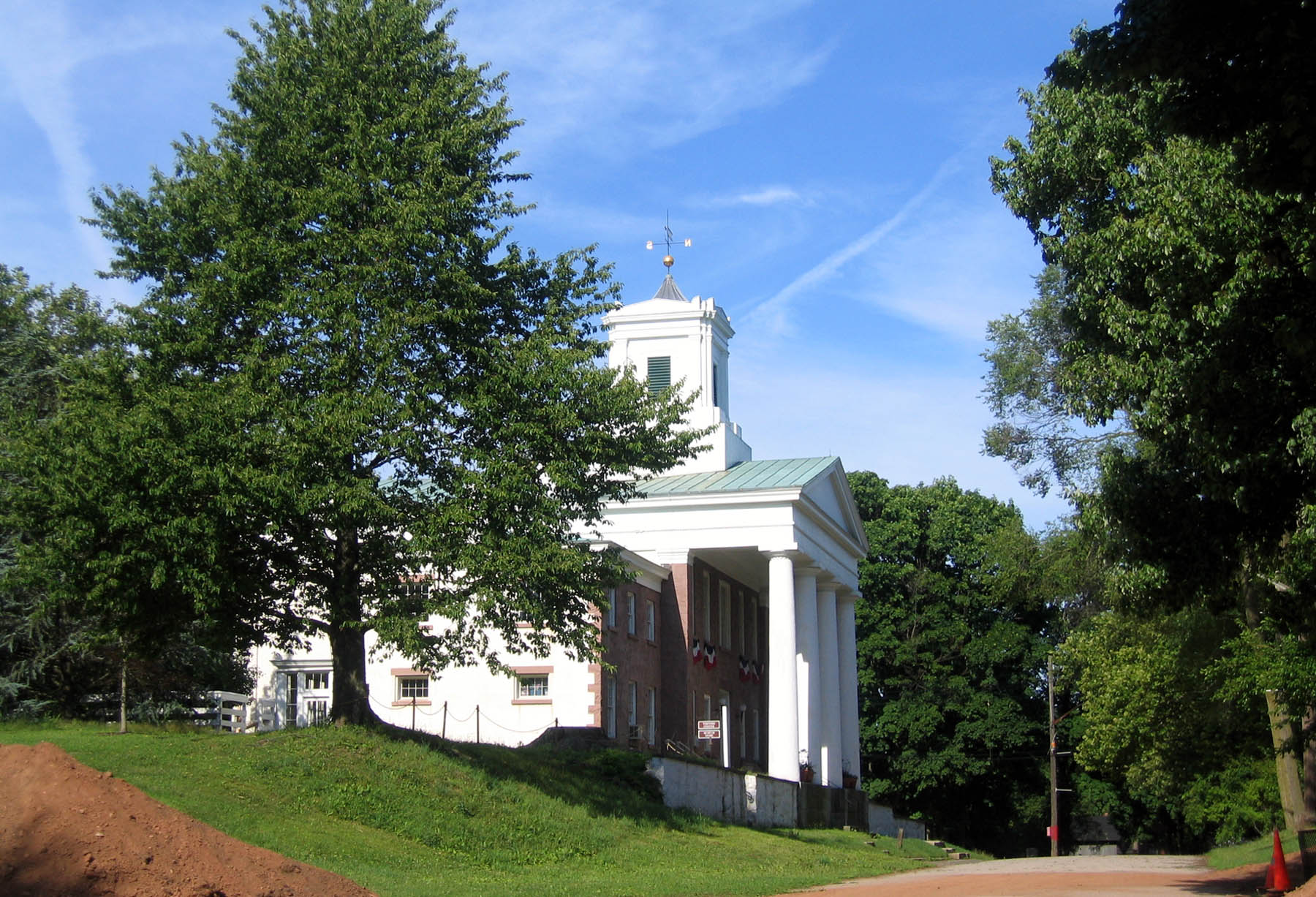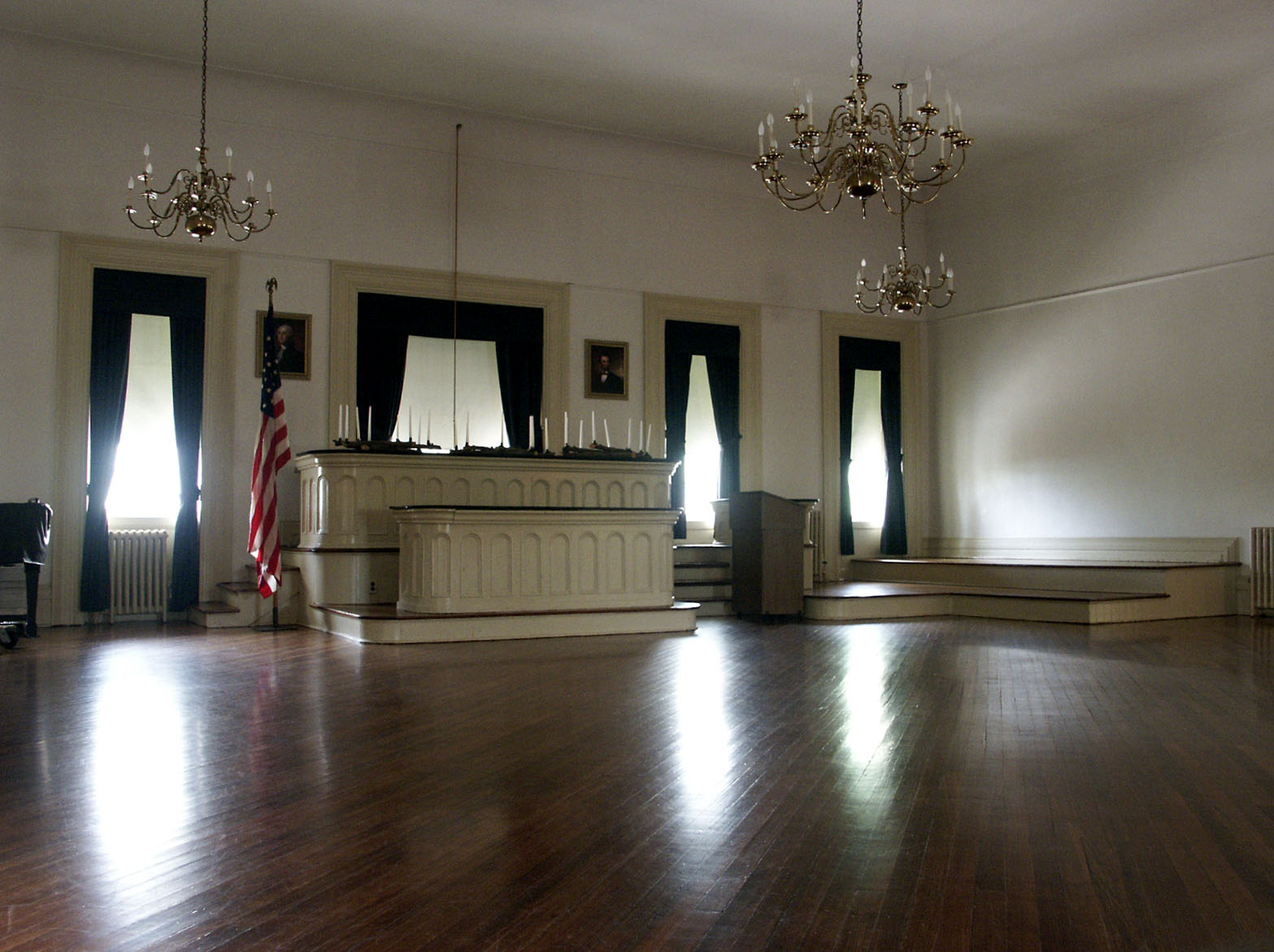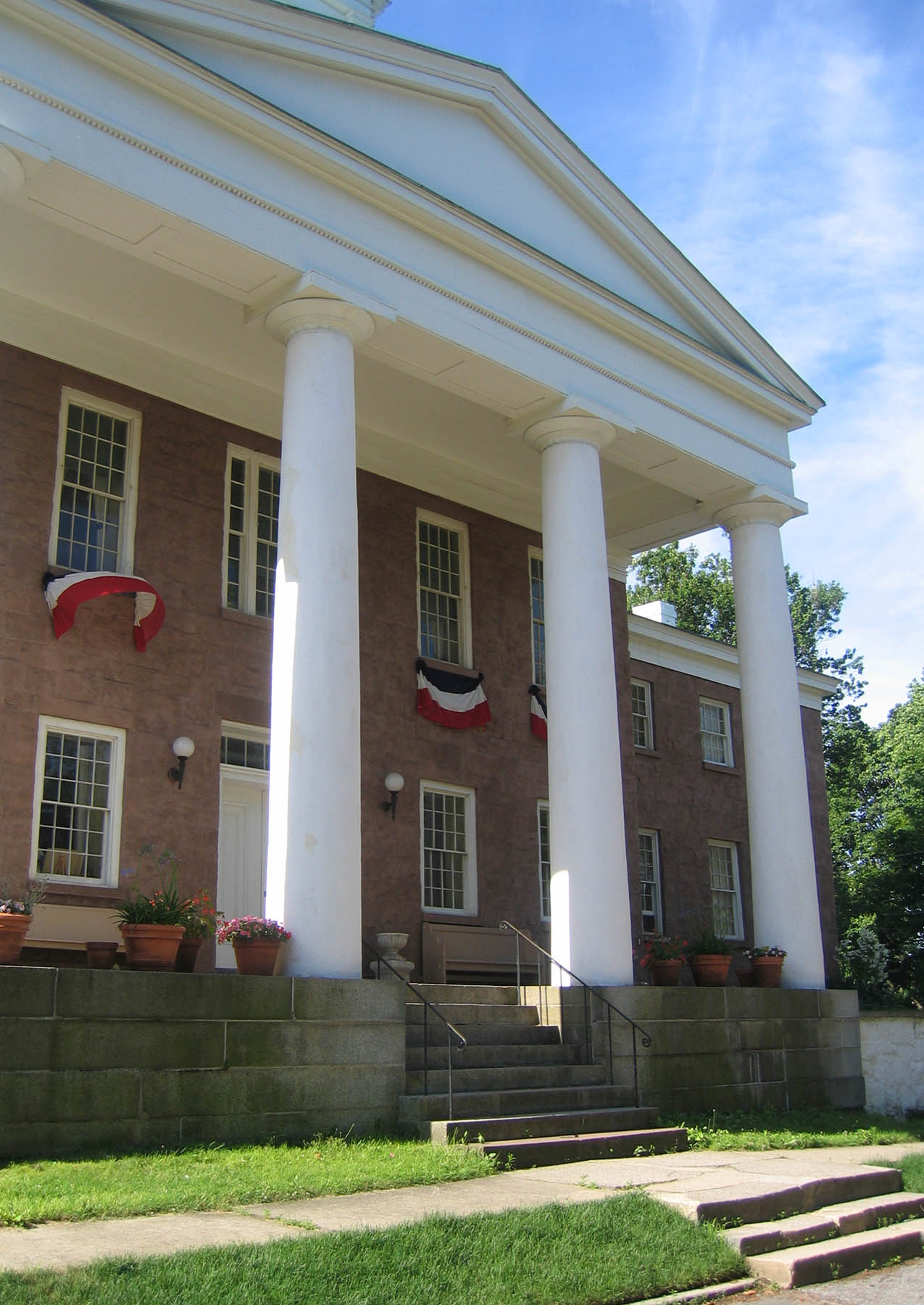Third County Courthouse #1
The Third County Courthouse is located on Center Street at the head of Court Place. It was built in 1837 on this site, replacing earlier courthouse buildings that had been located on other sites nearby.
Standing on one of the highest points in Richmond, this imposing Greek Revival building was designed to both reflect and inspire civic power and pride. The front (north) wall of the structure is built of rough-faced Staten Island trap rock; the other walls are brick.
The architectural form is a center block with a pedimented portico and flanking wings. The portico is supported by four massive Doric columns. It is not known who designed or built the courthouse but it has been suggested that elements such as the cupola (bell tower) may relate to the work of Abraham P. Maybie, who is known for the Seaman's Retreat building in Clifton.
By the 1830s, the population of Richmond County had grown to over 7,000 residents, and community leaders decided that the county needed a new and impressive courthouse to replace the smaller wood-frame structure in use at the time. The land on which the Courthouse was built was given to the county by Henry I. Seaman. In 1836 Seaman purchased a large piece of property between Richmond Road and Clarke Avenue with the intent of developing and enlarging the village of Richmond. He subdivided the land into 119 lots and built five cottages, and in April 1837 he transferred a large plot on Center Street to the county for the sum of $1 on condition that a new courthouse was to be constructed on the site “without reasonable delay.”
The new structure was completed in 1837, and it served as the county's center of public business and judicial activity for the remainder of the 1800s. In addition to housing the court and the jail, the building also housed the office of the County Clerk and Surrogate until 1848, when the Second County Clerk and Surrogate's Office (now the Historical Museum) was built.
The Courthouse was the setting for many trials from 1837 to 1919. During those 82 years, cases were heard by judges and juries in the courtroom on the upper floor of the building. Some of those trials were civil disputes between neighbors, while others were of a criminal nature. The village of Richmond was a lively place on trial days, with lawyers, witnesses, jurors, and spectators coming from all parts of Staten Island.
One of the most sensational trials to take place in the Courthouse was that of Mary (Polly) Bodine, who was accused of murdering her sister-in-law, Emeline Houseman, and Emeline's young daughter on Christmas night in 1843. Polly's trial attracted the attention of the newspapers, and crowds of onlookers came to the Courthouse to attend her trial in 1844. The jury could not reach a verdict, and Polly was subsequently tried two more times in different venues. At her third trial in 1846 she was declared innocent.
From 1837 to 1860, a portion of the Courthouse also served as the Richmond County Jail, housing male and female prisoners from all parts of Staten Island. The jail was supervised by the Richmond County Sheriff, who maintained his office and residence in the Courthouse. In addition to overseeing the jail, the sheriff served summonses, carried out court orders, and supervised property auctions. In 1860, the need for more space and improved conditions led to the construction of a new jail attached to the Courthouse (where the Historic Richmond Town parking lot is now located). The jail was substantially rebuilt in 1903, and remained in use until 1953. It was demolished by the City in 1959.
In 1898, Staten Island became one of the five boroughs of New York City, and all local government and court functions were gradually moved to new facilities at St. George. The last court session held upstairs in the courtroom was in 1919.
The Courthouse remained vacant from 1919 to 1932. In 1932 the City of New York made repairs to the derelict structure, after which it housed an assortment of community service agencies, including a dental clinic, a baby clinic, and a branch library. In 1948, the City turned the Courthouse over to the care of the Staten Island Historical Society. The building was designated an official New York City landmark by the New York City Landmarks Preservation Commission in 1969.
Today the building serves as Historic Richmond Town's Visitor Center and Museum Store. The first floor features the exhibition Third County Courthouse: Center of Civic Life on Staten Island. The courtroom on the second floor is the setting for the "Historical Detectives" and "You be the Judge" school programs, and is also made available for a variety of meetings and functions.






